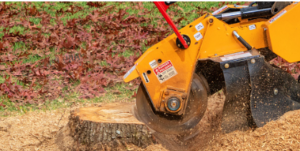You can turn your dream home into a reality by working with the best Normus-Homes luxury home builders Adelaide. But before you choose a builder, do your homework. Look at reviews and compare their services.
 The best custom homes are built to meet your lifestyle needs, including the ability to expand or adapt them as you grow older. Normus-Homes offers bespoke designs that work for all stages of life, from young families to empty nesters.
The best custom homes are built to meet your lifestyle needs, including the ability to expand or adapt them as you grow older. Normus-Homes offers bespoke designs that work for all stages of life, from young families to empty nesters.
Do You Research
If you’re looking for a new home, it’s essential to do your research. Find out your needs and consider how your family will grow. It will help you make the best choice for your lifestyle. You may even want to look into a house and land package, which allows you to save on stamp duty.
Hire a Professional
Hiring a professional custom home builder can save you money on building materials. These builders have industry connections and can get you better prices on high-quality materials. They will also work with you to create a design that fits your tastes and budget. It will save you time and money in the long run.
Purchase High-end Materials
Custom-built homes use high-end materials that add value to your home. These materials are made using the latest technologies and processes, ensuring they will last a long time. They are also designed to meet your needs and reflect your style.
Why Choose Normus Homes?
Normus Homes has been building customised single-family homes since 1991. They offer a dedicated consultant for each project and detailed builder and finish schedules. They also tailor their homes to fit each site’s characteristics and zoning requirements. Their homes are perfect for growing families or empty-nesters looking for a new place to live.
Normus Homes recently launched a new flagship display home and a Showhomes Collection featuring two new signature designs. Their constructions have received various accolades and awards, including the 2021 Master Builders South Australia award for medium-density dwellings. They are a trusted and reliable name in the Adelaide luxury new home building industry. They can handle any construction, from a simple renovation to a complete knockdown and rebuild.
Experience
If you want to build a custom-built home, you should look for Normus-Homes luxury home builders Adelaide with a lot of experience. Building a fully customised home requires more work and time than a semi-custom or pre-fabricated house. The building process can take six months to two years, depending on the size and type of construction.
You should also choose a company that has a good reputation and offers references. It is important because you can get an idea of the quality of their work and customer service by talking to other clients. Also, make sure to ask about the warranty and guarantees of their products.
One of the best is Normus-Homes luxury home builders Adelaide, which has won several HIA awards for its designs. These homes are crafted with quality materials, including Caesarstone Australia benchtops, Beaumont Tiles splashbacks, and CLARK tapware. The stone wall in the master wing is a striking feature that enhances the grand feel of the home.
Flexibility
Normus Homes also offers a wide range of customisation options to make your home your own. You can choose from various finishes, materials, and features to create the perfect space for your family. And because Normus Homes is a custom builder, you can be sure your home will be built to the highest quality standards.
If you’re looking for a luxury home builder in Adelaide, Normus Homes is the perfect choice. With their experience, flexibility, and commitment to quality, they will build you the home of your dreams.
When choosing a custom home builder, you want to ensure that they can meet your specific needs. It includes the type of kitchen and bathroom and any other required amenities. It is also essential to ensure they know about local market conditions and building regulations or permits.
Normus Homes offers a variety of flexible designs to suit your lifestyle and needs. These include accessible homes with special considerations to heighten safety features, mitigate tripping hazards and slippery surfaces, and provide spacious rooms for added mobility. These homes are perfect for anyone, from young families to empty nesters. During open hours, you can visit their Display Homes Collection to experience the Normus Difference and discuss your new bespoke forever home with their Custom Homes Consultant.
 For those who have difficulty reaching their feet or completing basic foot care tasks such as cutting toenails, removing callous and corns or managing ingrown toenails our disability care
For those who have difficulty reaching their feet or completing basic foot care tasks such as cutting toenails, removing callous and corns or managing ingrown toenails our disability care 
 Digging it out
Digging it out
